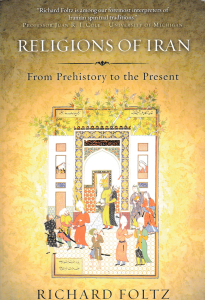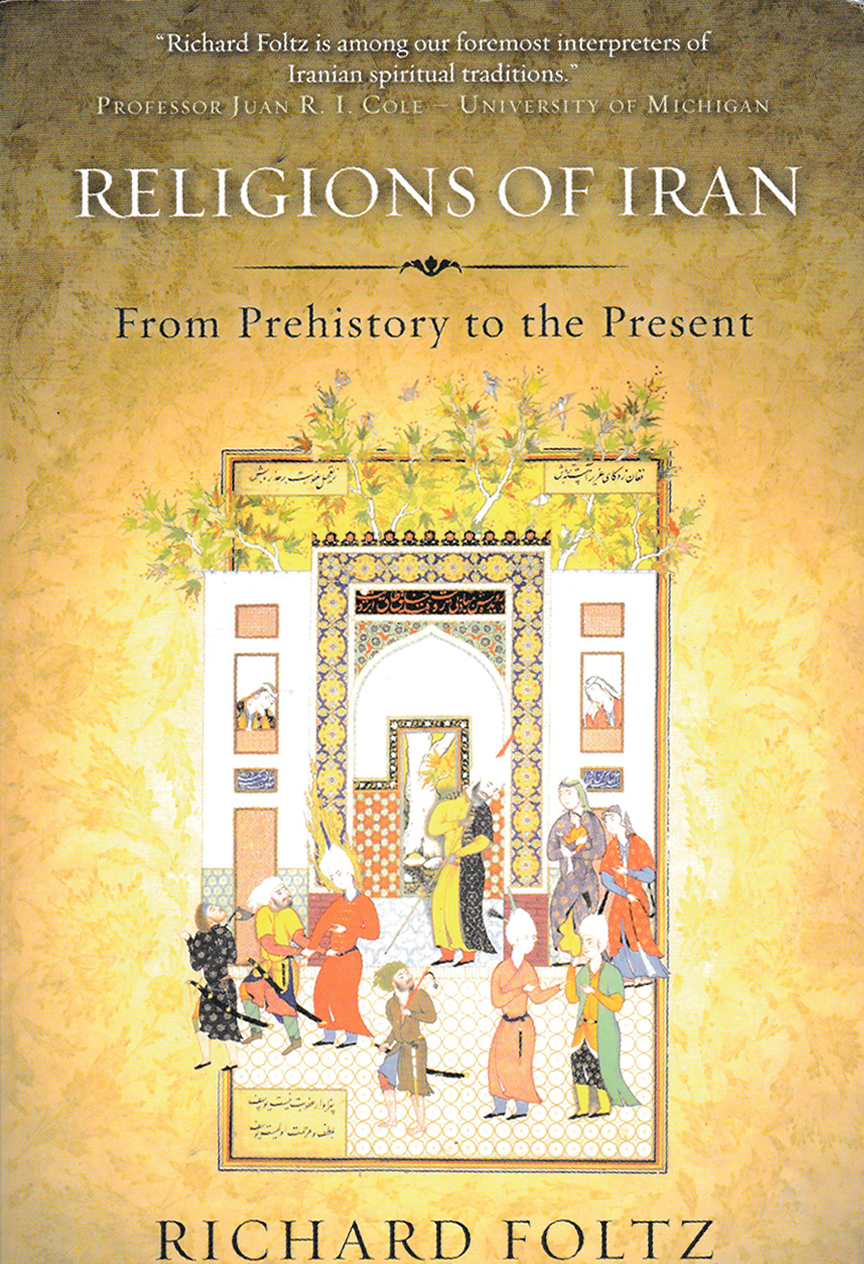Few would dispute today that religion has been playing a pervasive role in the political and social lives of people in Iran. Indeed, never has cogent understanding of religions and their complexities in Iran seem more important than in the recent decades. Increasing number of scholars are curious as to how religious attitudes and activities affect communities in Iran, both large and small, and in the Middle East at large. Some argued that the globalization of communication, the twenty-four hour news cycle, and the proliferation of social media have amplified an increase in secular activism. The mainstream media has emerged as the main source for fresh examples of religious traditions and perspectives, in practice, offering vivid—but selective—glimpses of religious events and adherents. We cannot deny that since the events leading up to the 1979 Islamic Revolution in Iran, the portrayal of the country and its people within the expanding channels of media productions in North America has been very negative. Undoubtedly, through ubiquitous depictions, they have very much shaped—and continue to shape—our views and understanding of Iran, its civilization and Iranians at large. Certainly, we should not allow quick glimpses define our understanding of decidedly complex phenomenon such as religion(s). Cogent understanding must come from systematic exploration of both the historical underpinnings of—in this case—Iran and its religion(s). Zoroastrianism, Iran’s own unique and ancient religion, whose past is prologue to its present and future, defines Zarathushties’ comprehensive belief system in Iran, India and especially in the diaspora.
 Richard Foltz, in his recent book Religions of Iran (Oneworld, 2013) provides a much needed and a systematic exploration of Iranian religions, allowing readers to make sense of a tangle of information from a plethora of sources. Foltz’s survey of recent scholarly literature, and his distinct presentation of both the history and divergent worldviews in Iran, proves the book’s value and effectiveness. Facilitating comparisons and contrasts, his study encourages readers to appreciate the compelling diversity of religions in Iran while recognizing many fundamental similarities, perhaps stemming from the unique character within Iranian culture that has remained pervasive through millennia.
Richard Foltz, in his recent book Religions of Iran (Oneworld, 2013) provides a much needed and a systematic exploration of Iranian religions, allowing readers to make sense of a tangle of information from a plethora of sources. Foltz’s survey of recent scholarly literature, and his distinct presentation of both the history and divergent worldviews in Iran, proves the book’s value and effectiveness. Facilitating comparisons and contrasts, his study encourages readers to appreciate the compelling diversity of religions in Iran while recognizing many fundamental similarities, perhaps stemming from the unique character within Iranian culture that has remained pervasive through millennia.
Foltz’s Religions of Iran is, admittedly (p. ix), an expansion upon his earlier book Spirituality in the Land of Noble: How Iran Shaped the Wold’s Religions (2004). He is intent to counter the prevailing view amongst many scholars and individuals in dividing Iran’s longue durée history into two separate pre- and post-Islamic historiographies (p. ix). On the contrary, Foltz argues, the existence of uniquely Iranian traditions that are shared by diverse religious traditions in the Iranian plateau—namely the celebration of the Nôrûz by Muslims, Baha’is, Jews and Christians, as well as esoteric teachings of heterodox spiritual masters, known commonly as ’irfân, to name but a few—underlines the unbroken character of what may be branded as an Iranian religious tradition (p. xv).
In five sections/parts Foltz discusses topics as varied as Indo-European migrations, Mithraism, the quest for historical Asho Zarathushtra, Mandaeism, Judaism, Christianity, Buddhism, Manichaeism, Mazdakism, Islam, Sufism, Kurdish Yezidis, Babism, the Islamic Republic and the conditions of contemporary Zarathushties in Iran. A sub-chapter titled ‘Iranian Goddesses’ (pp. 56-74) is a contribution from his wife Ms. Mania Saadi-nejad, who holds an M.A. in Ancient Iranian Languages and Culture (Tehran University), and who studied for two years in the doctoral program at the Sorbonne in Paris.
In Part One Foltz starts off with a short section on the aforementioned structure and argument of his book. This section is cogent and argues very well for the points of entry and selection of topics. In discussing the historical Zarathushtra he has relied on recent works by Kellens and Skjærv⌀, and seems to agree with their preference in translating Yasna (Vedic yajna) as “sacrifice” rather than simply “worship.” Although he qualifies the term “sacrifice” not as the act of surrendering or forfeiting—of something dear/valuable to a deity, etc.—as is commonly applied today; but rather “making [something] sacred” (p. 16). Accordingly, the middle Persian compound mazdēsnīh (Mazdā Yasna)—traditionally understood to mean “worship of [Ahura] Mazdā”—would be translated as “Mazdā sacrifice”. Yet, one wonders why Foltz refrains from applying the same translation to the similar Middle Persian compound dēvāsnīh? For he translates it not as “Daeva sacrifice”, but “demon worship” (p. 51)?
Moreover, in discussing the notion of religion in the Shāh-nāmeh, specifically those stories pertaining to the hero Rostam, Foltz emphasizes the fact that religion is ever-present, and that the hero constantly prays to God (Yaz[a]dān: ‘deities’). Yet, he maintains, there is little reference to Zoroastrianism (p. 54). Clearly a more careful examination of the epic Shāh-nāmeh would have clarified this perplexity: in narratives describing the hero in the epic, Rostam frequently calls upon and prays to the god/lord Mehr (Mithra) or khodāvand-i Mehr. At one point in the epic Rostam praises the noble religion of Zarathushtra, but confesses that his/or that which is suitable for him is none other but the āyēn-i Mehr, or the Mithraic cult. The reason was—it is implied by the poet—that as a man living in the wilderness, Rostam was unable to observe the principles of the Good Religion, namely killing and consuming xrafstras (obnoxious animals), instead of “bounteous animal” such as (Av. geuš-spenta) gospand (sheep/cattle). This notion, in my opinion, corroborates with views presented in other, secular/non-religious Pahlavi texts—namely Khosrov-i Kavadān ud Rīdakī—which similarly do not conform to orthodox Zoroastrianism exemplifies in religious Sasanid texts.
In Parts Two to Five of his book, Foltz presents stimulating and thought provoking discussions on histories and developments of Jewish, Buddhist, Christian, Mandaic, Manichean and Mazdakite religions in Iran, as well as the introduction of Islam after Muslim conquest of the Iranian plateau. In addition, Foltz provides fascinating accounts on the 19th century millenarian movement in Iran known as Bābī, and the later Bahā’ī faith. Relying on his earlier fieldwork in Iran, the results of which had appeared in valuable articles in the International Journal of Iranian Studies in 2008/9, Foltz discusses the condition of the small Zarathushty minority in Iran today.
Foltz’s book succeeds in contextualizing religions in Iran, specifically in the arena of paradoxical cultural situations.
RELIGIONS OF IRAN : FROM PREHISTORY TO THE PRESENT
By Richard Foltz
Published by Oneworld PP 314 US $30
ISBN 978-1-78074-308-0
Rastin Mehri (PhD SOAS), is currently a faculty member at the Department of Humanities and Social Sciences in Douglas College, New Westminster B.C., Canada.
This review appeared in The FEZANA JOURNAL, Fall 2014, No 28, Vol. 3.

